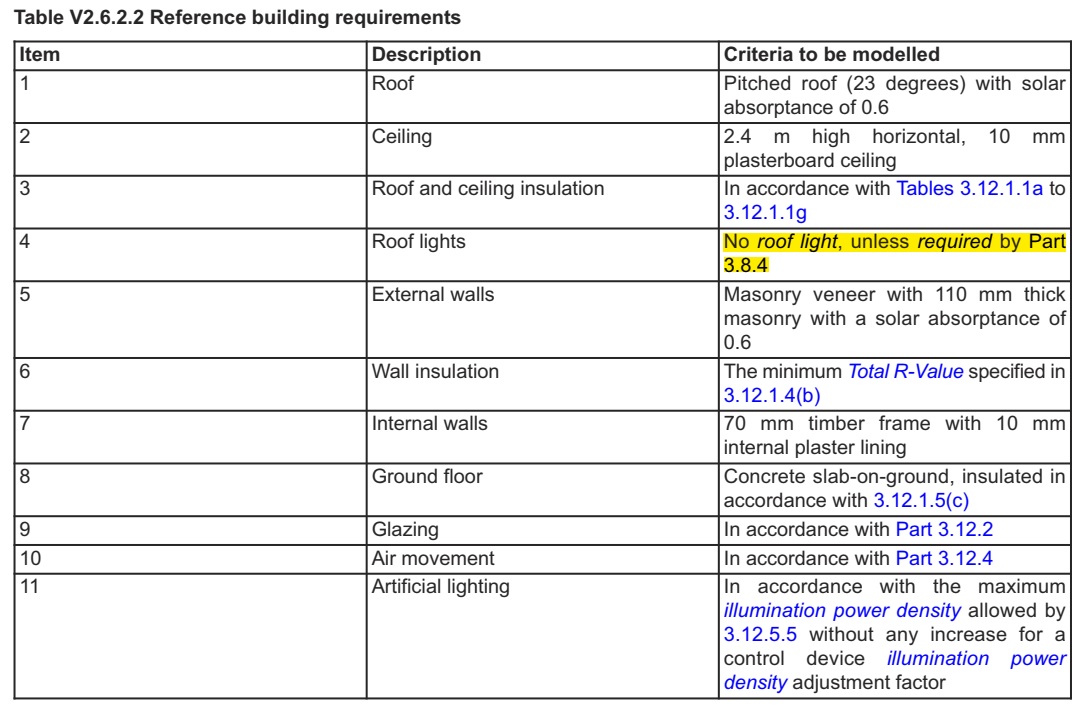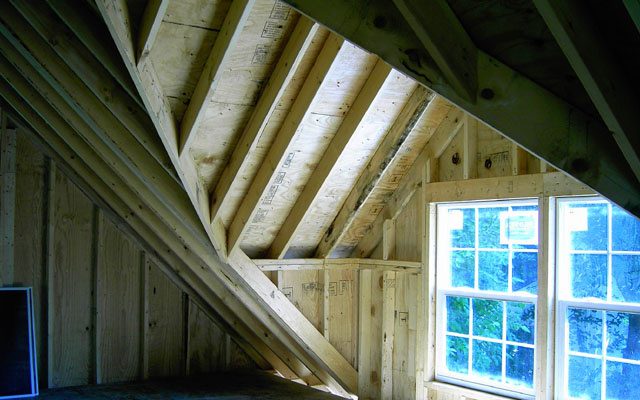Does adding skylight helps with energy compliance using VURB approach?
The short answer is no. When applying the VURB Performance Solution, you must note that NCC 2019 doesn’t consider roof light a window and explicitly excludes it from the Reference Building model. To increase passive solar heat gain or daylight levels inside the building, and at the same time achieve cost-effective energy compliance, we recommend adding dormer windows where there is not enough wall area to further increase the glazing (especially for north-facing walls).


Skylights, good for daylighting, bad for energy efficiency
Generally, we may prefer skylight over windows as they introduce more daylight inside the house. More daylit houses demand less artificial lighting and hence, less cooling demand. However, skylight contribution to the reduction in cooling demand is far offset by its role in allowing high level of solar heat gains inside. We may balance the two mentioned impacts, by installing a tinted-glazed skylight, however, energy efficiency still lacks behind the limited daylighting. The reason is roofs play a major role in blocking heat transfer rates in winter, Hence we tend to add high levels of insulation to the roofs. However, adding a skylight with even a low U-value (say U2.0) is still 10 times more than that of a roof having an NCC minimum insulation requirement (for climate zone 6, a Total R-value of R5.1 results in U0.2). Hence, skylights decrease building thermal performance in both summer and winter.
Thermal bridging effect is another reason why skylights are bad for energy compliance. Thermal bridge simply means a pass of least thermal resistance for heat transfer in a wider area of material with a high thermal resistance. In this case, a roof with a Total R-value of R5.1 (U-value of 0.2) has a very high thermal resistance, however, installing a skylight over with a U-Value of 3.0 (15 times more) creates an opening in an insulated roof and creates a thermal bridge or cold bridge. To compensate for the loss of insulation, added insulation to the roof or ceiling must be increased. Also, you can choose to install a high-cost U2.0 skylight, which although not ideal, could greatly mitigate the thermal loss.
In the following, impact of skylight on one the most used energy compliance pathways is investigated.
Skylight, worst option for energy compliance using VURB
VURB is the best available option for a cost-effective energy compliance and in some cases, the only option. National Construction Code (NCC) sets the rules for this verification method and the energy assessor has to follow. One of these rules is described in NCC Vol 2.0 Table V2.6.2.2 as below:
No roof light shall be modelled for Reference Building unless required by Part 3.8.4
In other words, unlike the Proposed Building, the Reference Building must have no skylight unless required by Part 3.8.4 that is where adding a skylight is the only possible means of daylight access.
Compliance using VURB method is achieved where thermal energy demand of the Proposed Building is equal or less than that of the Reference Building. Hence, having a skylight is always an obstacle for the Proposed Building to comply with the code (i.e. high cost insulation or glazing must compensate for the lesser thermal performance). In the design stage and where possible, use of dormer windows are preferred and is explained below.

Dormer windows as an alternative to skylights
Where there is a pitched roof and a raked ceiling, dormer windows (if possible to construct) are a good alternative to skylights having the same area and thermal properties. Achieving energy compliance is more cost-effective with dormer windows than skylights having the size and thermal performance. This is certainly the case for north-facing gabled dormers in cold climates. The underlying reasons are:

Reference Building modelling
Unlike dormers, skylights must not be modelled for the Reference Building. As dormer is considered a window, it is required to be added as an input in Glazing Calculator. Hence, The outputs of the Glazing Calculator (that is U-value and SHGC) can then be assigned to the Reference Building. So dormers contribute to the Reference Building thermal performance, whereas skylights don’t.
Reduction in cooling demand
Skylights have a high view factor to the sky. However this may be a good thing for daylight access, it is certainly a bad thing for energy compliance. For climate zone 6, using the VURB method, skylights make it a lot harder for the Proposed Building to comply with the code. For climate zone 7 where only heating energy demand matters, skylight contributes to the loss of insulation and hence, an increase in heating demand.
No thermal bridging effect
Dormers are not part of the roof obviously, hence no thermal bridge occurs over the roof. With thermal insulation to the roof being intact (i.e. no loss of insulation due to an opening), there is no need to add more insulation to the ceilings to compensate for the loss of insulation.

